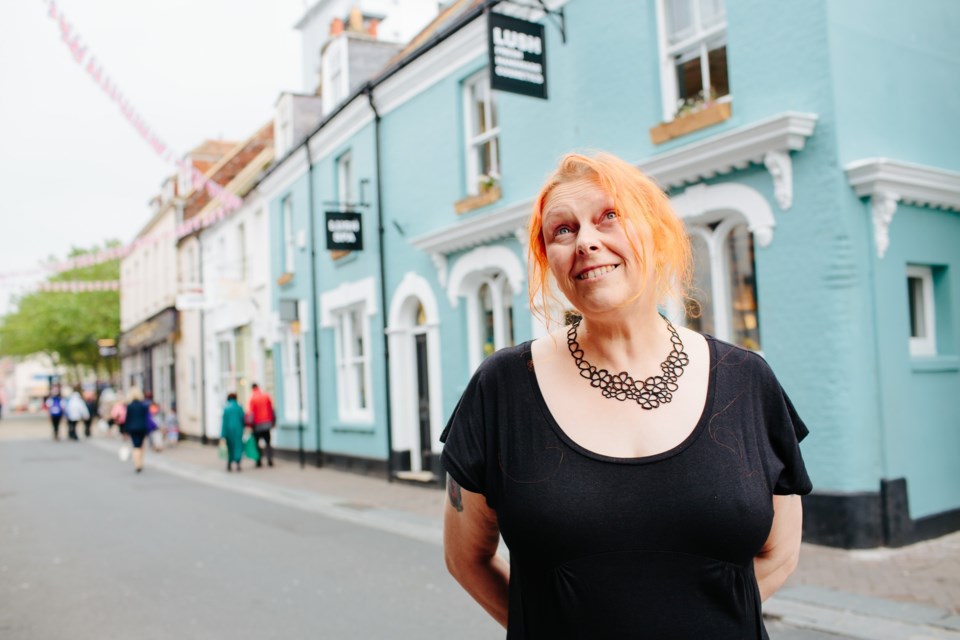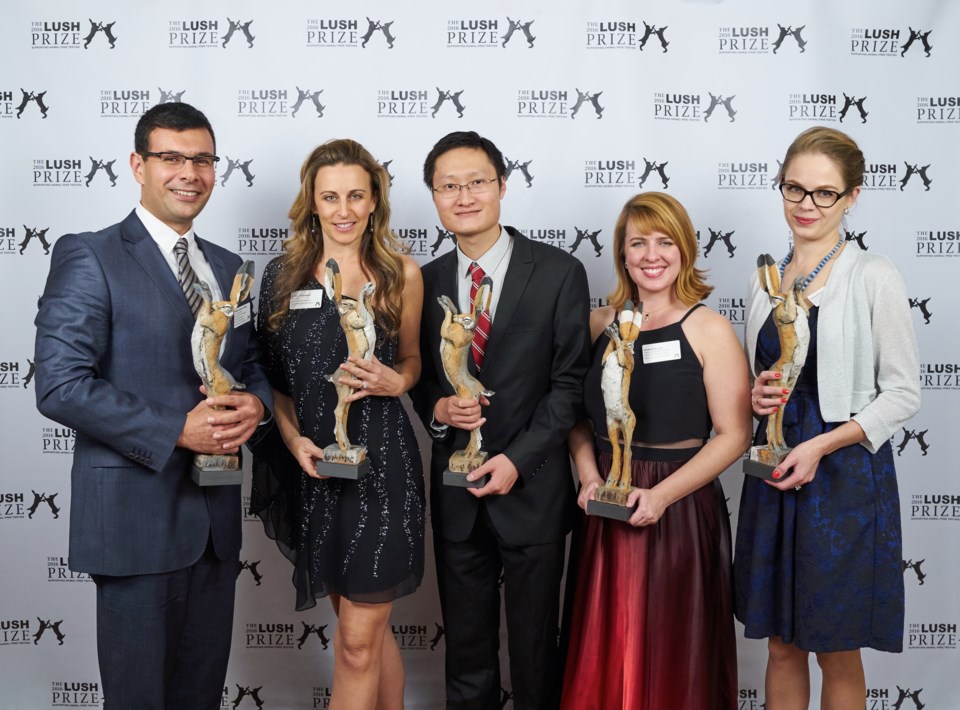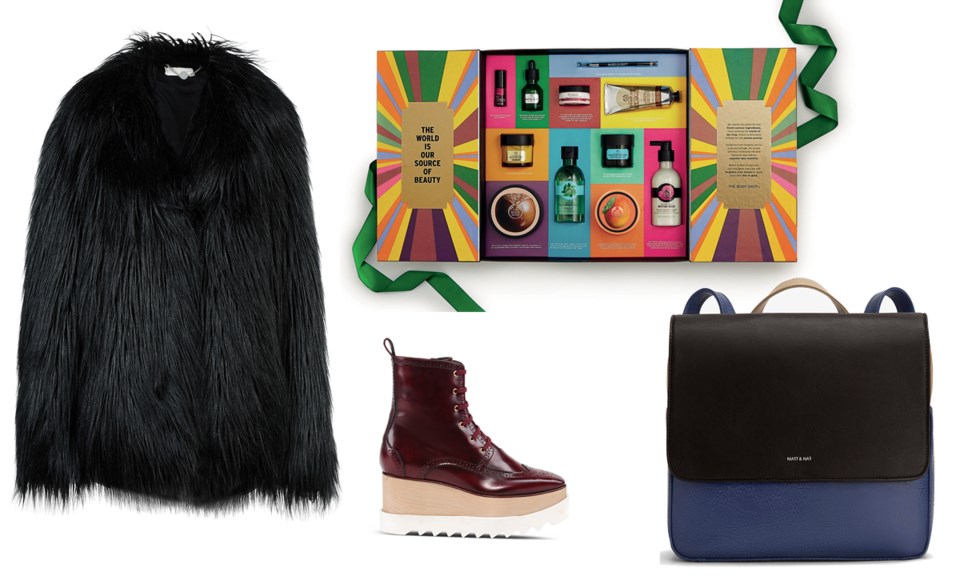This month, British beauty brand Lush – which has its North American headquarters in Vancouver – announced the winners of its 2016 Lush Prize. This £350,000 (CA$590,000) award is split between scientists, researchers, educators, lobbyists and campaigners working toward eradicating animal testing. It’s just one example of the way cruelty-free cosmetics brands continue to be disruptive, 40 years after Anita Roddick founded the Body Shop and changed the beauty industry for good.
Early Days
Starting out was tough for the Body Shop. “A number of challenges presented themselves, such as managing the first audits, persuading suppliers to change, and reacting to criticism from the industry and media about safety concerns,” says Kate Levine, the brand’s international director of commitment and corporate communications. Originally focused on animal welfare, the Body Shop later became a pioneer with its campaigning on community trade and environmental issues. It also spawned Lush, founded in 1995 by a group of former Body Shop suppliers. It’s now the other major cruelty-free beauty player in high-street retail.
“Bunny Huggers”
Initially, Lush didn’t position itself as cruelty-free, although animal welfare has always been one of its fundamental beliefs. “Having come out of the Body Shop stable, we didn’t want to be a Mini-Me, so sticking ‘Against Animal Testing’ in the window wasn’t an option,” says Hilary Jones, Lush’s ethical director. Besides, the brand was creating unfamiliar products – like its now-famous bath bombs and packaging-free solid shampoos – so it had to educate customers. “At what point do people start thinking, ‘Guys, you’re just a load of sandal-wearing bunny huggers’ and stop buying your products?” says Jones.

Still Disruptive
Gradually, Lush ‘came out,’ and it’s now a vocal activist and donor to campaigns including animal welfare, freedom of information, Guantanamo Bay and the refugee crisis. “We give money to people trying to change the world in their own communities, whether they’re taking in injured hedgehogs or trying to address human-rights issues,” says Jones. “We get, ‘Why are you talking about this when you make soap?’ all the time. My answer is always, ‘We’re human beings, and every human being should have an opinion about how other humans are being treated.’” To preserve its integrity, Lush never monitors how sales are affected by campaigns.
The Body Shop remains active on animal rights, community trade and environmental campaigning; it’s currently focusing on regenerating wildlife corridors so endangered species can reconnect. “Our new commitment, Enrich Not Exploit, is not simply about doing less harm, but about actively working toward a clear destination: a future in which humanity and other life can flourish on Earth forever,” says Levine. “We believe this is pushing the boundaries of what brands normally do.”
Is the Animal-testing Battle Won?
There’s a perception that, thanks to legislation, cruelty-free is the norm for even mainstream beauty brands. But Jones doesn’t believe this is the case. “The job is not done – not even in Europe, where we’ve got the strongest laws – because we get contradictory pieces of legislation,” she says. That’s why the brand started the Lush Prize, which is now in its fifth year. The Science and Young Researcher Awards are given to those working in all areas of science, not only cosmetics. “We realized we needed to go back to the scientists. If animals are not required and there is an absolute alternative for everything that scientists may want to test, it doesn’t matter what the legislators do because animals are out of the mix,” she explains.

Ethical Fashion
Meanwhile, the fashion industry is decades behind beauty when it comes to being cruelty free and ethical. “It hasn’t even got over the ‘easy’ hurdles of child labour and whether its manufacturers are behaving in an ethical way, let alone animal testing of dyes, or water pollution,” says Jones. In terms of luxury brands, Stella McCartney is committed to sustainability and responsible sourcing, and it uses no animal products. At a more affordable level, there’s Montreal’s vegan and sustainable accessories brand, Matt & Nat. But environmental, ethical and animal-welfare issues don’t seem prominent for many mainstream fashion companies.
“Fashion is the second-most-polluting industry on the planet. It’s responsible for keeping millions of garment workers in poverty, and it’s a major contributor to the archaic use of animal products,” says Sica Schmitz, founder of LA multi-brand boutique Bead and Reel. Her store only stocks pieces that are vegan and sweatshop free, with an emphasis on eco-friendly materials. “I’m very optimistic that vegan and ethical fashion will become the norm. There has been such progress in beauty and food, and I do think that fashion will be next,” she adds.
Hilary Jones is less confident. “The high street is getting worse. We’re getting brands that build their whole business on fast, cheap fashion,” she says.
Is there a solution?
Schmitz says we all need to consume less. “Globally, 80 billion new pieces of clothing are made each year. This is 400 per cent more than even just a few decades ago. By buying less and investing in quality pieces, all these numbers will go down.”
Jones believes emailing companies and calling them out publicly can also be effective. “It’s heartening to see cruelty-free bloggers in the fashion and beauty industries – grassroots movements, people taking it upon themselves to push, peer to peer,” she says.
Ultimately, she has hope. “Eventually, something has to give. You can’t have a world getting more cruel. You have to have a world getting kinder.”



